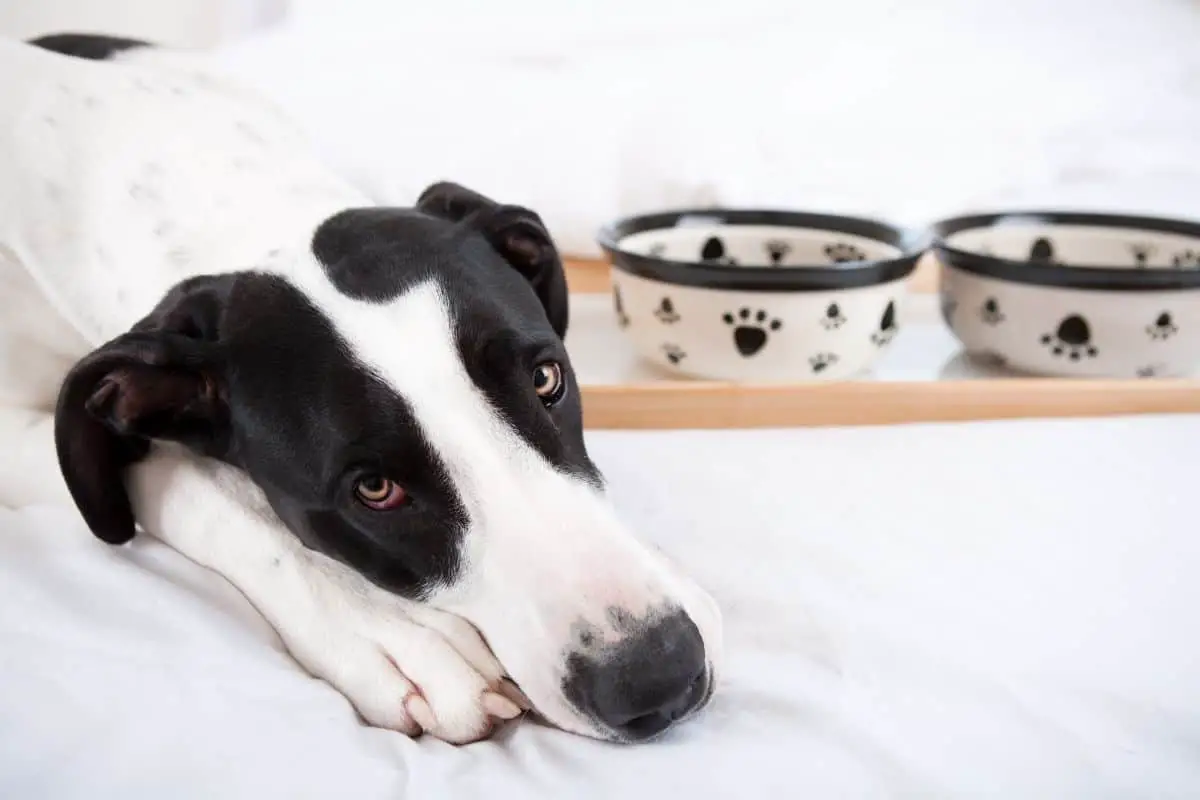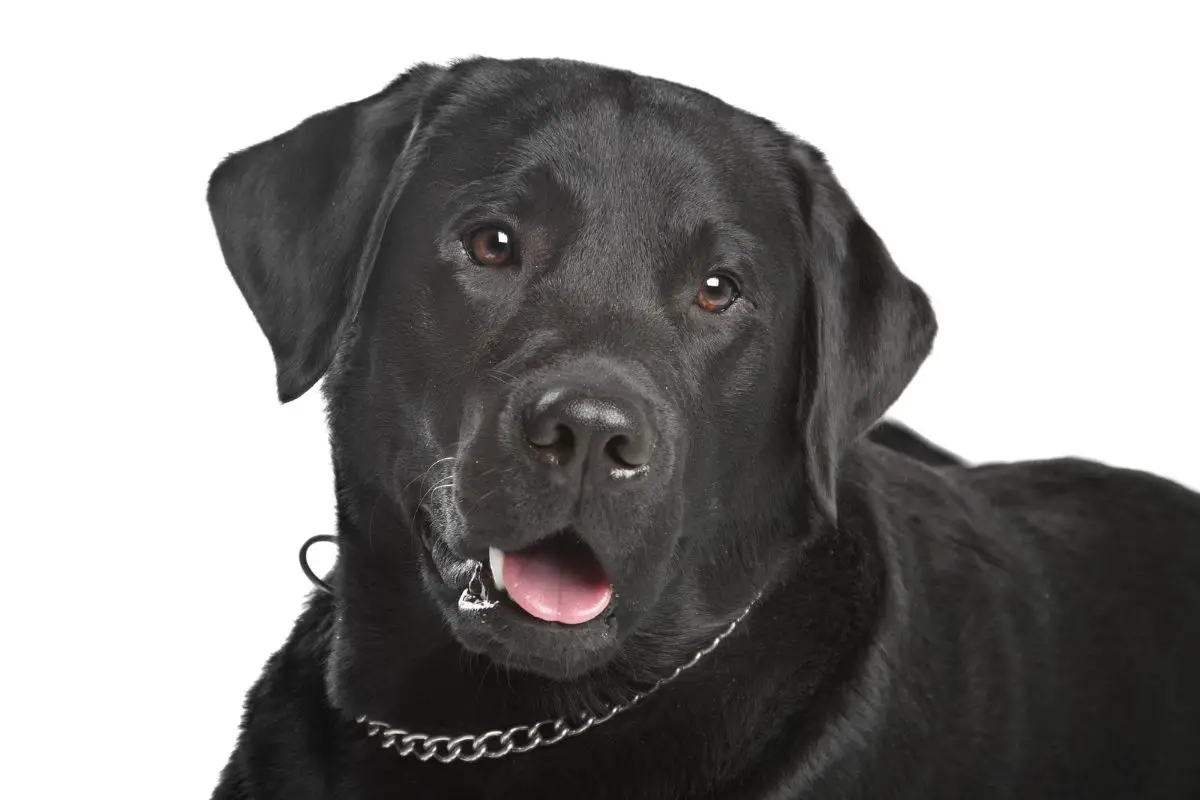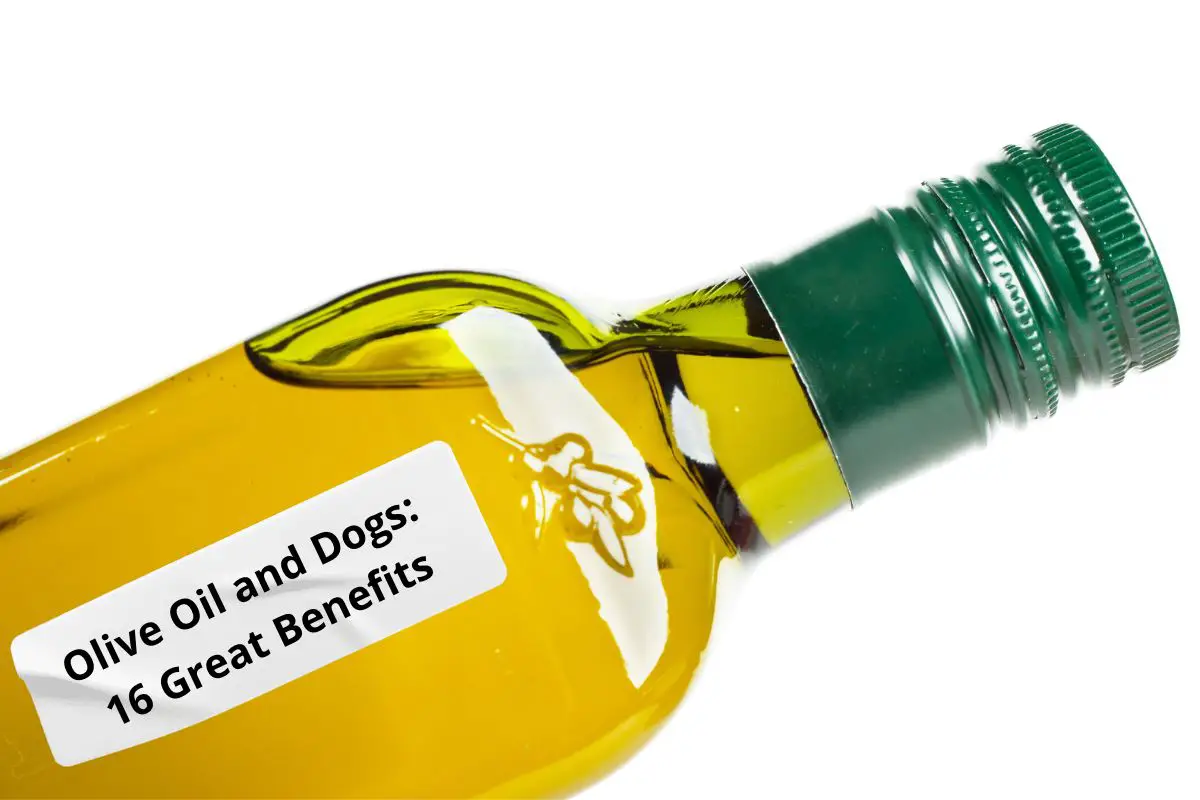This post contains affiliate links.
It can be scary when your dog isn’t eating, especially if you don’t know what’s wrong. Just like humans, dogs need food for energy and to keep their bodies functioning, and too long without it can have serious medical consequences. But how long is it before you should really start to worry?
Dogs can go three to five days without eating, but if your dog hasn’t eaten in 24 hours, you should take them to the vet as soon as possible, especially if your dog won’t drink water either. Your dog might be picky about its food, but it’s possible there is a serious underlying medical condition.
When your dog won’t eat, try to make observations about the changes in their life and routine to help your vet find the source of the problem. This guide will help you learn what to watch for and what some of the possible reasons are that your dog might not be eating.
What Happens When Your Dog Won’t Eat
A few days without food won’t do any long-term harm for a healthy dog with no medical problems. However, most healthy dogs won’t forgo eating for longer than a day. Fasting in dogs is usually a sign that something is wrong, whether physical or emotional.
The first sign that a dog isn’t eating enough is lethargy and a lack of energy. Without food, they don’t get the nutrients they need, so they may also have some issues with their gastrointestinal system. Any changes in your dog’s behavior and bathroom habits could be a sign of a deeper problem.
Dogs are also very food motivated, so you’ll likely notice quickly if your dog isn’t eating. It’s rare for a dog to starve to death; dehydration will usually be fatal before starvation will. Medical intervention is important before your dog gets to the point where either condition is a threat.
When Should You Worry If Your Dog Isn’t Eating?
In general, a few days without eating will not be life-threatening to your dog. However, it’s unlikely your dog isn’t eating without there being an underlying reason. This could be anything from toothache to a blockage in their intestines from eating something they shouldn’t have. As their owner, it’s essential you continually monitor your dog’s feeding and bathroom habits, so you’ll know when something isn’t right.
It’s crucial to remember that while a healthy dog can skip a meal or two without incident, there might be more serious consequences for a sick dog. Be especially mindful of senior dogs, as they’re at higher risk for most medical conditions than younger dogs. You know your dog’s routines best, so if you sense that something about your dog’s feeding routine is off, it’s best to talk to a vet sooner rather than later.
Signs Your Dog May Be Sick
If your dog isn’t eating, you can look for signs to determine if they’re sick. Any vomiting or diarrhea is a serious symptom where there could be something wrong. Check to see if your dog is drinking water or not, as this is useful information for the vet to have that can help make a diagnosis.
Your Dog Starts Eating But Stops Suddenly
Mouth and tooth pain is a common reason why your dog might be avoiding food, especially kibble. Though some dogs will eat through dental pain for months before the pain gets too severe, pay attention to whether or not your dog is interested in food. If your dog tries to eat but stops, it’s likely related to a dental issue.
Your Dog Seems Tired
Also, evaluate your dog’s energy level. A healthy dog that is picky about their food will be more energetic and perky than a dog that feels sick or is in pain. Watch to see if your dog is eager for food but doesn’t want what’s in their dish or if they’re uninterested in all food.
Anything you can observe about changes in your dog’s behavior and routines will be helpful for your vet.
Your Dog Has No Other Symptoms
Anxiety and stress can make your dog temporarily lose their appetite with no other physical symptoms. If your dog isn’t eating but hasn’t vomited or had diarrhea, then they may be stressed.
They shouldn’t go longer than 48 hours without food as any longer can have serious medical consequences. Make an appointment with your vet if your dog won’t eat for longer than a day to rule out any possible medical problems and get advice for managing your dog’s stress.
Reasons Your Dog Might Not Be Eating
There are lots of reasons why your dog might have lost their appetite. You can separate these reasons into three main categories: an issue with the food, a medical problem, or a stress response. While picky eating might seem less of a problem than the other two categories, the consequences of not eating are the same, no matter what the underlying cause is.
Your Dog Dislikes Their Food
Like humans, dogs can be picky eaters. When a dog won’t touch the food in their bowl but still begs for table scraps or readily asks for treats, it could indicate that your dog doesn’t like the food in their dish.
If you recently switched dog food brands or your favorite brand updated its recipes, your dog might not like the new taste. Similarly, if your dog is used to getting table scraps, they may not want to go back to their boring kibble.
When you need to change to a new kind of dog food, introduce it gradually to help avoid this. Start by mixing in a little with your dog’s old food, and gradually increase the ratio of new to old food until your dog is used to the change.
Sometimes, a dog will refuse a new food, and you may need to look for another brand. This can be frustrating, but with a bit of patience, you can be back to a normal feeding routine soon.
Your Dog Has Pain or Nausea When Eating
Lethargy, vomiting, and diarrhea are all signs that something deeper is going wrong with your pooch than just not wanting to eat. Whether your dog is trying to eat but can’t keep food down or is avoiding eating in the first place, you should make a vet appointment sooner rather than later.
A lack of appetite is a fairly common symptom in pregnant dogs, dogs in heat, and dogs with diabetes. Just because it’s common doesn’t mean it’s safe, however. A trip to the vet will help you make sure everything is okay and adjust your feeding routine to accommodate your dog’s condition.
Adverse Reaction to Medication
Dogs who have recently had a medical issue or procedure might be reacting negatively to a medication they’re on, or they could be feeling poorly as they recover. However, proper nutrition is important to support your dog’s recovery, so you should consult with your vet about how to feed the dog.
In some cases, your doctor may recommend tube feeding or trying something new, such as rice and chicken or wet food, until they feel better.
Dental and Oral Pain
A common physical problem that would stop your dog from eating is dental pain. It may not be immediately obvious that your dog’s mouth or teeth are hurting, as most of the time, dogs will push past minor pains to eat. If there’s an infection in their mouth or a painful tooth, they might be able to avoid using that part of their mouth when they eat.
As the problem goes untreated, if it gets worse, your dog may eventually find that eating or drinking anything is too painful. It might seem like your dog is suddenly refusing food when in fact, they’ve been hiding their pain for a while.
Always keep an eye on your dogs when they’re eating to look out for signs they’re struggling. You might also notice this when they take treats, especially something crunchy. They may even reject a crunchy treat that they normally love due to the pain.
Your Dog Has Anxiety or Behavioral Issues
The final category of possible eating problems is stress-related food refusal. These may include:
- Changes to your dog’s environment can trigger a temporary loss of appetite.
- Moving to a new home or even moving which part of the house where your dog’s bowl is can make them nervous.
- Other big changes like a new addition to the family (human or four-legged) can also give your dog anxiety.
Sometimes, these issues will resolve themselves with time, but in the meantime, it’s important to keep an eye on your dog’s food and water intake so you can intervene if it goes on too long.
Dogs need a safe, protected place to eat as that’s a time when they feel vulnerable. To that end, if you have multiple dogs or other pets, it’s possible that another animal is behaving aggressively or protectively over the food, and your dog is anxious about eating.
In the wild, this food guarding behavior is a survival tactic, but at home, it can cause problems for your family and your pets. Resource guarding can be avoided early by training your puppy to eat from your hand and by petting them and taking their bowl away while they eat.
However, if you haven’t done such training or if you rescue an older dog, watch their body language around food dishes and intervene if you see any aggression. You may need separate areas for each dog to eat so that there isn’t any competition or friction.
A vet can also help you make a plan to manage this behavior so all your pets feel safe while they’re eating.
How To Encourage Your Dog To Eat
When your dog is reluctant to feed, there are a few ways you can encourage them. You can try these tricks before taking your dog to the vet, or your vet might recommend them if, after an examination, they find your dog is healthy.
Try Adding Low-Sodium Broth
To get a picky dog to eat, you can make their food more appetizing by adding warm sodium-free chicken broth or some water to their dry food to make it softer and more fragrant. Similarly, with wet food, you can gently warm it in the microwave so that it’s more palatable to your pup.
Try Plain Chicken and Rice
For a dog that loves table scraps, you can boil chicken and rice (plain, without seasonings or sauces – never share your own food with your dog) and add that mixture to your dog’s bowl. Over time, you can change the ratio of kibble to chicken so that your dog is eating mostly dog food again.
Try Cutting Down Their Treats
Be mindful about how many treats and table scraps you give your dog. They may be refusing their normal food because they’ve realized that if they do so, they’re more likely to get treats.
If that’s the case, you may need to gradually reintroduce your dog to an all-dog food diet. Unless you’re cooking meals specifically for your dog with the nutritional guidance of a vet, it’s unlikely that they’re getting all the nutrients they need from your table scraps.
Try Probiotics
A probiotic is a good way to help get your dog’s nutrient intake back on track and tempt them to eat their food. Putting a probiotic like the Zesty Paws probiotic for dogs from Amazon.com on top of their kibble will help make the dry food more appealing.
Conclusion
While it’s possible for your dog to live for up to five days without food, it isn’t a good sign if your dog refuses food. Refusing food is often a sign of a deeper problem and should be treated seriously.
Whether the issue is emotional or physical, you should address your dog’s needs as soon as possible. You may feel silly taking your dog to the vet only to learn they’re just a picky eater, but it’s better to be safe than sorry.
Related Articles
- How Long Can Dogs Go Without Water? (We Ask the Experts)
- Would Your Dog Eat You if Starving? (We Ask the Experts)
- Can Dogs Drink Sparkling Water? (Is It Safe?)
- What Can Dogs Drink Besides Water? (We Ask the Experts)
- My Dog Drank Pool Water: Here’s What To Do About It
- Dog Water at Night – When To Cut Them Off
- Considering Forcing a Dog To Drink Water? (Read This First)
- Can a Dog Go 8 Hours Without Water?
- Can Dogs Drink Coconut Water? Let’s Find Out!
- Can Dogs Drink Distilled Water? Let’s Find Out
Sources
- PetMD: Dog Not Eating? Here’s Why and What to Do
- ASPA: Food Guarding
- Dr. Phill’s Animal Hospital: How to Get a Sick Dog to Eat
- Well Pet: Understanding How Long a Dog Can Go Without Food or Water
Mrdogfood.com is a participant in the Amazon Services LLC Associates Program, an affiliate advertising program designed to provide a means for sites to earn advertising fees by advertising and linking to Amazon.com. We also participate in other affiliate programs which compensate us for referring traffic.





